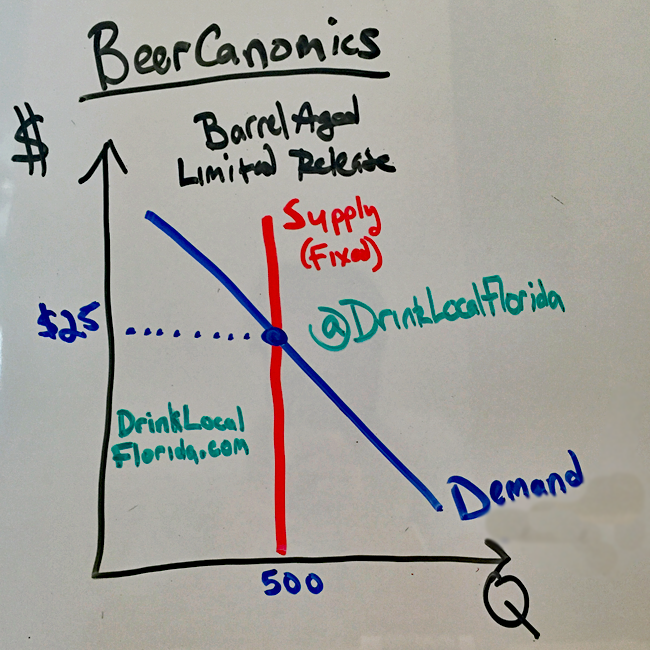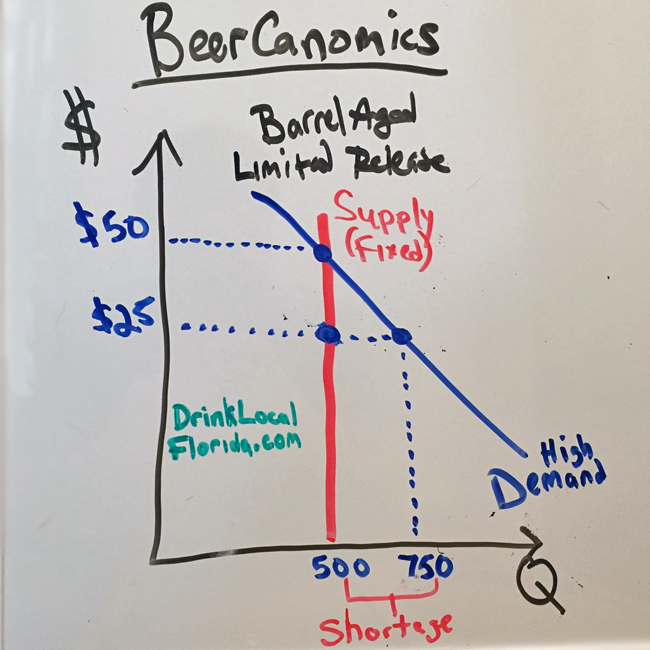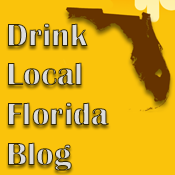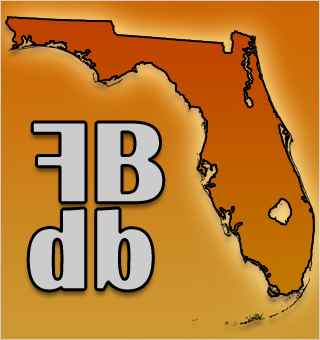Drink Local Florida Blog
Beercanomics - Supply, Demand and Limited Release Beers
I recently purchased a few different barrel aged, limited
release beers from a nationally recognized Florida brewery
celebrating their 3rd anniversary. They publicly stated on
social media that online ordering would open at a specific date
and time, and there would be limits on how many of each beer
could be purchased per person. I was ready to order and promptly
did so at launch time, getting the beers I wanted. Others
weren't as lucky, likely due to not placing their orders within
a few minutes of the online release. Many of these people voiced
their displeasure publicly and unpleasantly. Sorry about your
luck if you didn't get all you wanted, but I'd like to tell you
about how much worse things could be applying a little business
logic, basic economics and the less consumer-friendly
alternatives that exist.Creating and running DrinkLocalFlorida.com is a labor of love. Something else I enjoy but also do for a living is instruct economics at the college level. Maybe that professional experience can help me share some perspective. Let's talk about BeerCan-omics.
Everything in economics boils down to supply and demand. The higher the price you can sell something for, the more you produce. The more something costs, the fewer units are purchased by consumers. We all know demand is strong for local craft beer, especially the really good stuff. Supply varies tremendously, however. For example, Cigar City Jai Alai is always easy to find, while microbreweries, barrel aged beers and limited or special release beers especially, are produced in much smaller quantities.
 A one-time release, barrel aged beer is produced in a fixed
quantity. A standard barrel is 53 gallons, which works out to
be 424 sixteen ounce bottles, assuming no spillage or loss.
Let's say that a one-of-a-kind beer is aged over 1 year in a
bourbon barrel and only barrel is produced. To keep nice,
round numbers, let's say 500 bottles are produced.
A one-time release, barrel aged beer is produced in a fixed
quantity. A standard barrel is 53 gallons, which works out to
be 424 sixteen ounce bottles, assuming no spillage or loss.
Let's say that a one-of-a-kind beer is aged over 1 year in a
bourbon barrel and only barrel is produced. To keep nice,
round numbers, let's say 500 bottles are produced.Normally, the supply curve is upward sloping, reflecting that more will be produced if it can be sold for more money. However, the fixed supply of an exclusive release beer is represented by a vertical supply curve, as no matter the price, no more will be produced.
Demand is typically a downward sloping curve, as is the case here. However, demand for an exclusive release beer is likely inelastic. In an economics context, this means less responsive to changes in price. In other words, a meaningful number of people are willing to pay a higher price.
Where the supply and demand curves intersect is known as equilibrium. This is the price where the amount purchased (or demanded) is exactly equal to the amount produced (supplied). Equilibrium is shown in the first chart where 500 bottles are produced and sold for $25 a piece. Nobody is disappointed they weren't able to buy one, and the brewery is not left with a surplus of inventory.
But what if demand is very high and even more inelastic? Higher demand shifts the demand curve outward to the right and higher inelasticity makes the demand curve steeper. This scenarios is shown in our next chart, below.
 Now let's say this one-of-a-kind, barrel aged beer is in very
high demand. These types of a beers are often called "whales."
Demand is so high, that at the $25 price point there would be
a shortage. This means that demand exceeds supply.
In this example, people would want to purchase 750 bottles at
this price but only 500 were produced.
Now let's say this one-of-a-kind, barrel aged beer is in very
high demand. These types of a beers are often called "whales."
Demand is so high, that at the $25 price point there would be
a shortage. This means that demand exceeds supply.
In this example, people would want to purchase 750 bottles at
this price but only 500 were produced.How do businesses address a shortage? They raise their prices. They allow consumers to outbid one another. Given the fixed supply and high demand, in this scenario the equilibrium price resulting in no shortage or surplus would be $50 instead of $25. Continuing to sell the bottle at $25 a piece would result in a shortage of 250 units.
What can be done about this? There are two ways this can be addressed. First, the brewery could raise their prices. In this example, 250 fewer people are willing to pay $50 for a bottle than would be willing to pay $25. This eliminates the shortage and doubles the breweries revenue.
The other option is to have an old fashion line around the corner at the brewery. This is like waiting in line overnight to buy the latest iPhone on release date or to be first in a store for Black Friday door busters. Personally, I value my time and would not be pleased with this option.
My point is this: Next time you aren't able to procure the exclusive beer you wanted to buy, ask yourself if you'd rather pay a much higher price or spend several hours driving and waiting in a line. Online pre-sales are fair and efficient, and favor the consumer over profits.
If the brewery really wanted to maximize profit they could hold silent bids or auctions on the exclusive beers. Every potential buyer would enter in the price they are willing to pay, and only the people who entered one of the 500 highest prices (in this example) would be able to purchase the beer. This practice of charging consumers different prices based on their individual demand is known as price discrimination and would increase the breweries revenue even further. Again, this would be at the expense of us, the beer drinkers.
Rather than be mad at a brewery who sells out before you can make a purchase, take another perspective which is that they actually have the best interest of their consumers at heart.

